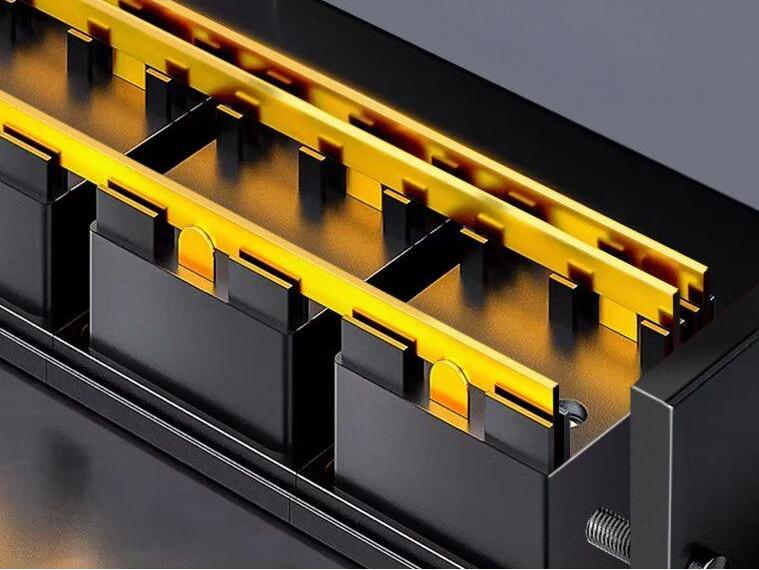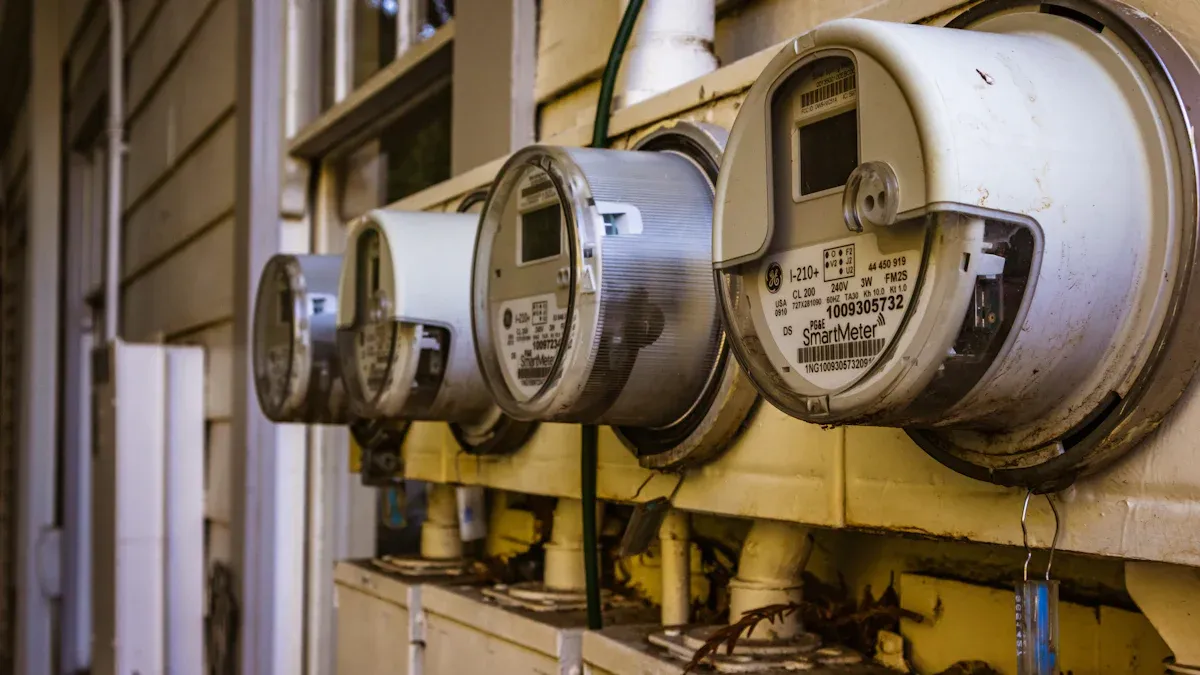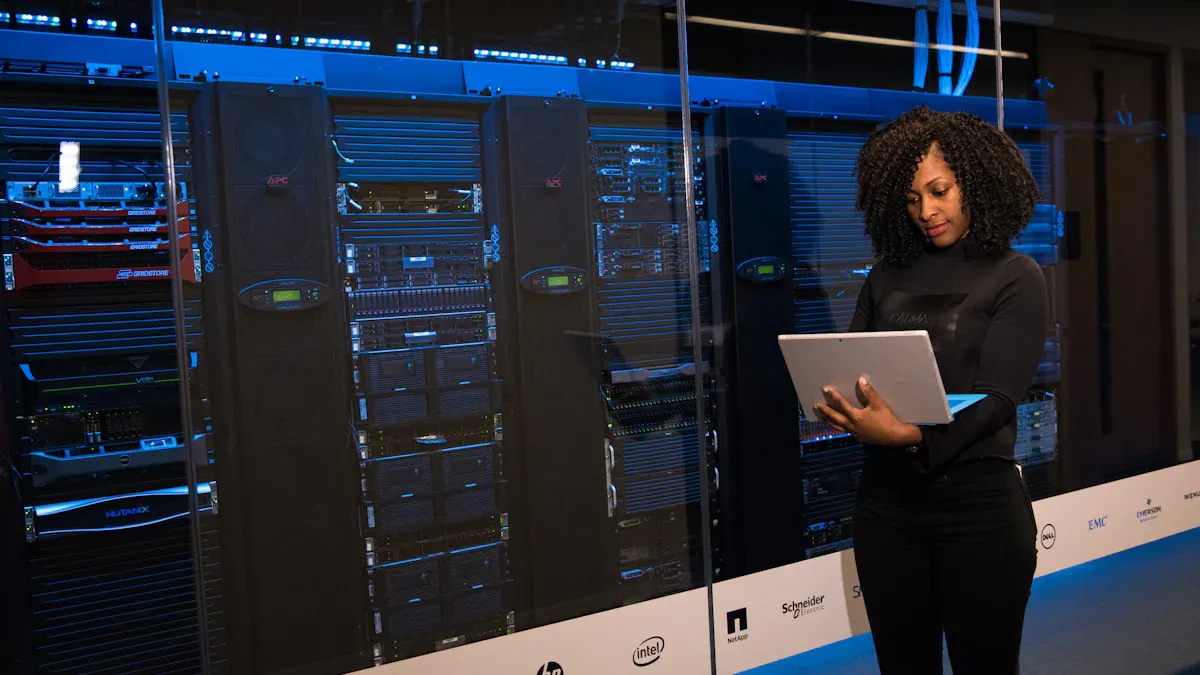© Copyright – 2010-2023 : All Rights Reserved. Sitemap
Power Distribution Unit PDU, rack mount PDU, PDU data center, Smart PDu, intelligent PDU
Power Distribution Unit PDU, rack mount PDU, PDU data center, Smart PDu, intelligent PDU
DTI-CX 2025 Digital Transformation Indonesia Conference, DATE:6-7 AUG.2025, Booth No.: C21

Effective power distribution is crucial for your operations. Power system failures cause nearly 44% of all data center outages, making the right power distribution unit essential. Your decision often involves choosing a switched PDU vs metered PDU, and in some setups, a digital meter vertical rack PDU offers an additional way to track usage. Each type provides specific advantages for managing your infrastructure, especially when paired with advanced options like a Monitored PDU for remote visibility or a switched PDU for full outlet-level control.

A metered PDU is a smart power distribution unit designed for precise energy tracking. It gives you a clear view of the power your equipment consumes at the rack level. This information helps you make informed decisions about your data center’s power management. Unlike basic power distribution units, these advanced models provide the data you need to optimize efficiency and prevent circuit overloads.
A metered PDU offers several distinct features for detailed power monitoring. These capabilities set them apart from simpler devices.
Using a metered PDU provides significant advantages for managing your infrastructure. You gain control over your power environment through data.
These smart PDUs are essential for calculating your Power Usage Effectiveness (PUE). They measure the IT load directly at your equipment, giving you the most accurate data for the PUE formula. This helps you track and improve your data center’s energy efficiency.
The detailed data also simplifies capacity planning. You can identify underutilized servers and balance power loads across your racks. This proactive approach to power distribution ensures you use your resources effectively.
A metered PDU is an excellent choice for any environment where power consumption data is critical. Certain industries rely heavily on them for stability and planning.

A switched PDU is an advanced power distribution unit that gives you complete control over your equipment. It builds upon the features of a metered PDU by adding remote power switching for each individual outlet. This means you can turn outlets on, turn them off, or reboot connected devices from any location with network access. This capability is a game-changer for managing unresponsive hardware and improving operational uptime.
These smart PDUs offer powerful features that give you granular control over your power distribution. You gain the ability to manage your infrastructure actively, not just monitor it.
A switched PDU delivers significant benefits for security and efficiency. You can secure your rack environment and respond to issues faster.
The ability to lock unused outlets is a major security advantage. You can prevent unauthorized hardware from being plugged into your rack. This feature is especially valuable in shared colocation data centers, as it stops others from accessing your power and protects your critical systems from tampering.
Advanced security protocols are also standard. You can set up user authentication and granular permissions. This ensures only authorized personnel can control power to specific outlets.
A switched PDU is essential for any environment that requires remote management and maximum uptime. They are particularly useful for geographically dispersed infrastructure.
Understanding the core differences in the switched pdu vs metered pdu debate helps you select the right tool for your needs. While both are intelligent power distribution units, they serve distinct primary purposes. One gives you data, while the other gives you data and control.
The most significant difference lies in their core function. A metered PDU is designed for monitoring, while a switched PDU adds active control.
A metered PDU gives you detailed data about your power consumption. This real-time monitoring helps you understand your energy use and prevent overloads. These smart PDUs provide deep insights into your power environment, often measuring:
You can choose between input-metered models for cabinet-level data or outlet-metered models for device-specific insights. This information is crucial for capacity planning and improving energy efficiency.
A switched PDU includes all these monitoring features but adds remote outlet control. You gain the ability to turn individual outlets on or off from anywhere. This transforms the power distribution unit from a passive monitoring device into an active management tool.
Key Takeaway: A metered PDU tells you what is happening with your power. A switched PDU lets you do something about it remotely.
The management interfaces also reflect this difference in function.
| PDU Type | Key Management Features | Common Network Protocols |
|---|---|---|
| Metered PDU | Provides local and remote PDU-level power monitoring. | Optional (SNMP, HTTP for some models) |
| Switched PDU | Offers PDU-level monitoring plus remote on/off control of individual outlets and power sequencing. | Standard (SNMP, HTTP/HTTPS, SSH) |
The ability to perform a remote reboot is the defining advantage of a switched PDU. When a server or network switch freezes, you no longer need to send a technician to the site to manually unplug it.
With a switched PDU, you can simply log into its web interface and cycle power to the specific outlet. This action reboots the unresponsive device, often resolving the issue in minutes instead of hours. This capability is invaluable for:
A metered PDU, by contrast, cannot perform this function. It can alert you that a device is drawing an unusual amount of power or no power at all, but it gives you no way to remotely interact with that device. You still need manual intervention to fix the problem.
Your budget plays a significant role in your decision. A metered PDU generally has a lower initial purchase price. It is a cost-effective solution if your primary goal is to gather power data for capacity planning, load balancing, and calculating energy efficiency.
A switched PDU represents a higher upfront investment. The advanced components required for individual outlet control and more sophisticated network interfaces contribute to its higher cost. However, this initial expense often delivers a strong long-term return on investment (ROI).
The operational cost savings come from:
When you evaluate the cost, consider the potential savings from preventing just one major outage or one emergency site visit. For many organizations, the ROI on a switched PDU becomes clear very quickly, making it a wise investment in operational resilience and efficient power distribution.
Your choice in the switched pdu vs metered pdu debate often comes down to your primary operational goal. Do you need to optimize energy consumption, or do you need to guarantee maximum operational uptime? Each PDU type is engineered to excel in one of these areas, though modern devices are blurring the lines.
A metered pdu primarily serves the goal of power efficiency. It gives you the data needed to make smart energy decisions.
A switched pdu is built to deliver maximum operational uptime. It gives you active control to resolve issues quickly and maintain service continuity.
Can one PDU achieve both?
Yes. Modern intelligent PDUs often combine features to support both efficiency and uptime. They deliver clean, stable power while providing the tools to manage it effectively. The ability to remotely toggle individual outlets allows you to power down non-essential devices to save energy. This same feature lets you restart critical equipment to restore services, directly supporting uptime.
Many advanced PDUs now offer a suite of features that serve these dual purposes. These capabilities transform the PDU into a central hub for resilient and efficient power management.
| Feature | How It Supports Efficiency & Uptime |
|---|---|
| Remote Management | Reduces on-site visits (efficiency) and allows for quick responses to power issues (uptime). |
| Outlet-Level Monitoring | Tracks power at each outlet for precise load balancing (efficiency) and fault detection (uptime). |
| Hot-Swappable Meter | Allows you to replace a meter without power disruption, ensuring continuous operation (uptime). |
| Color-Coded Outlets | Simplifies load balancing and cable management, improving operational workflow (efficiency). |
Ultimately, you must decide which goal is more critical. If your main concern is understanding and optimizing energy costs, a metered PDU is a strong choice. If your operation cannot tolerate downtime and requires remote control, a switched PDU is a necessary investment.
Selecting the right power distribution unit is a critical decision for your infrastructure’s health. Your choice depends on your specific operational needs, monitoring goals, and budget. By carefully evaluating these three areas, you can confidently select the PDU that offers the best value for your environment.
First, think about how easily you can physically access your equipment. If your servers are in a nearby rack, a manual reboot might seem simple. However, when equipment is in a remote location or a secure colocation facility, physical access costs time and money. A single “truck roll” to dispatch a technician can often be more expensive than the price difference for a switched PDU. This makes remote reboot capability a powerful cost-saving feature.
Even if your servers have built-in management tools like iDRAC or iLO, many other critical devices do not.
When these devices become unresponsive, you have no way to reboot them remotely without a switched PDU. This capability allows your support staff at a central Network Operations Center (NOC) to restore services immediately, eliminating the need for a physical service call and minimizing costly downtime.
Next, you need to define what you want to achieve with power data. Your power monitoring goals will determine how much detail you need. Are you trying to prevent overloads, improve energy efficiency, or meet regulatory standards?
For effective power management, you should track key metrics. A metered PDU provides the data you need to measure them.
Key Metrics to Track
If your goals include sustainability and high-level efficiency, you might track advanced metrics like Power Usage Effectiveness (PUE), Carbon Usage Effectiveness (CUE), and Water Usage Effectiveness (WUE). These metrics help you benchmark your data center’s performance against industry standards.
Your power management requirements may also be driven by compliance. Standards like ISO 50001 require organizations to measure, monitor, and document energy performance to validate savings. A PDU with accurate metering is essential for gathering this data, making it a core component of any certified energy management system.
Finally, you must consider your budget and the potential return on investment (ROI). While basic power distribution units have the lowest initial cost, smart PDUs often provide a much lower Total Cost of Ownership (TCO) over their lifespan. TCO includes the purchase price, installation, energy use, maintenance, and the cost of downtime.
A switched PDU has a higher upfront cost, but it can deliver a strong ROI. You can calculate this using a simple formula:
ROI = (Total Benefits – Total Costs) / Total Costs
The benefits include savings from reduced downtime, lower labor costs from fewer site visits, and better energy management. The following table breaks down how different cost factors compare across PDU types.
| Cost Factor | Metered/Monitored PDUs | Switched PDUs |
|---|---|---|
| Upfront Acquisition | Higher than basic due to monitoring features | Highest due to advanced remote control features |
| Operational Costs | Reduced by visibility into power usage | Further reduced by remote outlet control |
| Downtime Costs | Lower due to monitoring and early alerts | Lowest due to ability to remotely reboot devices |
| End-of-Life Costs | Lower due to longer lifespan and better management | Lowest due to extended equipment life |
Ultimately, investing in intelligent power distribution helps you identify underused equipment, optimize energy consumption, and prevent outages with early warnings. Over several years, these advantages make smart PDUs a more cost-effective solution than basic models.
When you need reliable power management, NBYOSUN offers a range of solutions built on over 25 years of industry expertise. Their products provide the advanced features necessary for modern data centers, from edge computing sites to large financial institutions.
If your goal is to optimize energy use, the NBYOSUN metered pdu is an excellent choice. These units give you the data needed for effective capacity planning and load balancing. They provide real-time monitoring with high accuracy, ensuring your measurements have an error margin within just one percent.
Key features of NBYOSUN metered models include:
- Certified Quality: They hold multiple international certifications, including CE, UL, and RoHS.
- High-Precision Monitoring: You get class-1 measurement accuracy for dependable data.
- Robust Safety: Units feature hot-swappable components and branch-rated circuit breakers.
- Flexible Installation: You can choose vertical (0U) or horizontal (1U) mounting with custom cable lengths.
For complete remote control and maximum uptime, a NBYOSUN switched pdu is the ideal power distribution unit. These smart pdus combine detailed monitoring with individual outlet control, allowing you to reboot unresponsive equipment from anywhere. This capability is critical for maintaining continuous operations, with some users achieving 99.999% uptime for their servers.
NBYOSUN integrates advanced security protocols like HTTPS and SSH to protect your infrastructure. You can also integrate these units with your existing DCIM systems for centralized management. This level of control over your power distribution helps improve efficiency, with some organizations reducing power consumption by 10%.
| Feature | Benefit You Receive |
|---|---|
| Remote Management | Control outlets and monitor power from any location. |
| Environmental Sensors | Maintain optimal conditions by tracking temperature and humidity. |
| Energy Efficiency | Reduce operational costs with detailed consumption data. |
| Safety Features | Protect equipment with built-in overload protection. |
Your choice in the switched pdu vs metered pdu debate comes down to your main goal.
A metered pdu is your cost-effective tool for essential power monitoring. It helps you prevent overloads and optimize energy. A switched pdu is the necessary investment for complete remote management and security.
Your final decision in the switched pdu vs metered pdu discussion balances your need for control against your budget. Brands like NBYOSUN provide reliable power distribution solutions for both scenarios, ensuring you find the right fit for your operation.
A metered PDU lets you monitor power usage for the entire unit. A switched PDU offers the same monitoring but adds remote on/off control for each individual outlet. You get data with a metered PDU, and you get data plus control with a switched PDU.
Yes. A switched PDU includes all the monitoring capabilities of a metered PDU. You can track voltage, current, and power consumption while also gaining the ability to control each outlet remotely. It provides a complete power management solution.
A metered PDU is a great choice when your main goal is to track energy use for capacity planning and efficiency. If you can easily access your equipment for manual reboots, a metered PDU provides the essential data you need at a lower cost.
You use a switched PDU to reboot devices that lack remote management cards. Network gear like firewalls, switches, and storage arrays often freeze. A switched PDU allows you to cycle power to these critical devices when they become unresponsive, ensuring total remote control.
A Professional And Leading Manufacturer
For OEM
& ODM Power Distribution Unit (PDU)
You Can Trust
CONTACT
Ningbo YOSUN Electric Technology Co., LTD
Leading Professional Manufacturer in PDU Power Solutions
Contact Info.